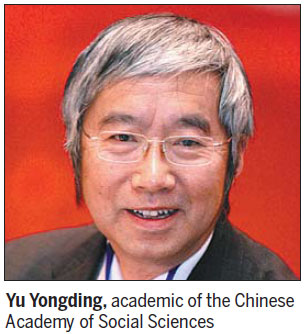China internationalize only when wise
By Cecily Liu (China Daily Europe) Updated: 2015-02-20 08:51
But Yu points out that one major challenge of China's currency liberalization is the increase in speculative flows, because China's higher interest rate attracts more inward flows to earn carry trade. Investopedia.com defines carry trade as a strategy in which an investor sells a certain currency with a relatively low interest rate and uses the funds to buy a different currency yielding a higher interest rate, in order to capture the difference between rates.
In the early years of China's currency liberalization, much of the speculative inflows were hoping to gain from the continual renminbi appreciation, which is another challenge.
But this trend is now gradually reversing as the renminbi exchange rate has now reached equilibrium with the US dollar, and as the Chinese economy slows down and its capital account surplus is reduced, there is now depreciation pressure on the renminbi and an outflow of renminbi.
Yu says that although many economists believe such renminbi outflow will affect the renminbi internationalization process, that China should further stabilize the renminbi exchange rate to encourage renminbi internationalization, this is not the correct attitude.
In the face of these challenges, Yu says, it is important to reflect why China wants to internationalize its currency in the first place, which Yu summarizes as having five key goals.
The first is to reduce currency exchange risks, the second is to help China's financial services industry grow and become internationally competitive, and the third is to reduce China's large accumulation of foreign exchange reserves.
The fourth is to reduce the costs of exchanging renminbi with other currencies, and finally there is the hope that the renminbi can become a global reserve currency.
Yu says many of these goals have been somewhat achieved by China's renminbi internationalization, such as the internationalization of China's financial services industry, but more of the objectives have not yet been well achieved.
For example, the goal of reducing renminbi exchange risks for international trade has not been achieved thoroughly because much of the international trade is not yet being transacted in renminbi. China's foreign reserves accumulation has also not been reduced, but actually increased due to speculative inflows.
The goal of helping renminbi to become a global reserve currency has experienced some milestones, as several foreign central banks have now decided to hold a small proportion of their foreign reserves in renminbi.
However, the gain from carry trade from holding the renminbi is one key motivation for such measures. This means China is paying out a large amount of interest to foreign central banks for holding its currency over the years.

















